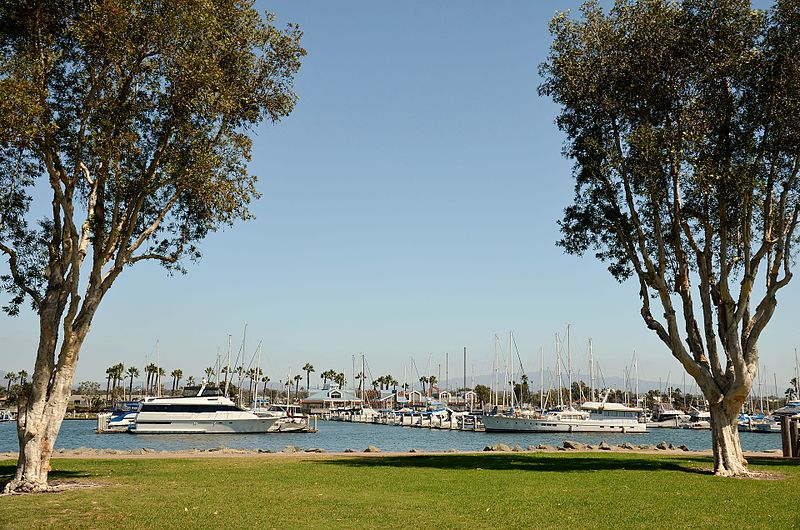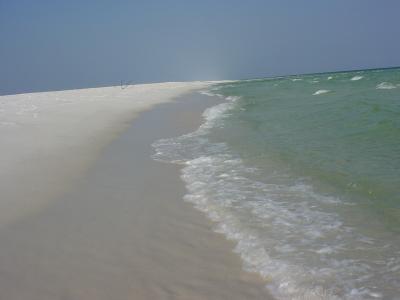Climate Change Adaptation Planning in the City of Chula Vista, California

Photo attributed to Roman Eugeniusz. Incorporated here under the Creative Commons Attribution 3.0 Unported license. No endorsement by licensor implied.
Posted by
Jessi KershnerProject Summary
Chula Vista is the second largest city in the San Diego metropolitan area of southern California. Since the early 1990s, Chula Vista has been working to address climate change and in early 2009, the city tasked the Climate Change Working Group (CCWG) with developing strategies to help plan for and adapt to the potential impacts of climate-related changes. In October 2010, the CCWG released a final list of recommendations on climate adaptation strategies to reduce the city’s future risk from climate change-related impacts. Staff developed implementation plans around the proposed adaptation strategies, which were then approved by the City Council on May 3, 2011. In 2013, the city released a progress report for the implementation plan and in 2017, released a Climate Action Plan.
Background
Chula Vista is located between San Diego Bay and the coastal mountain foothills in southern California. It is the second largest city in the San Diego metropolitan area with a population just over 270,000. Since the early 1990s, Chula Vista has been working to address climate change through a number of programs and policies (e.g., greenhouse gas emission inventories, free business and energy evaluations, energy efficiency and conservation, alternative transportation, etc.). The Climate Change Working Group (CCWG), comprised of residents, businesses, and community organization representatives, helps the city to develop climate change related plans and policies.
In 2008, the CCWG reviewed over 90 carbon reduction measures designed to reduce greenhouse gas emissions in Chula Vista. A final list of seven mitigation measures were recommended to the City Council. In addition, Chula Vista signed the Kyoto Protocol and is working with ICLEI and the California Climate Action Registry to monitor the city’s progress by performing greenhouse gas emissions inventories. Chula Vista has realized that even with efforts to reduce emissions, climate change impacts are still likely to occur in the region. In response, CCWG evaluated strategies and actions to help Chula Vista adapt to potential climate change impacts, and the development and release of the 2017 Climate Action Plan.
Implementation
The CCWG began the process of planning for adaptation measures in January 2010. Multiple diverse stakeholders were brought together for the entire working group process, including representatives from the water districts, electric companies, local builders, colleges, public health groups, small businesses, local environmental groups, realtors associations, ICLEI, and local foundations. The group met bi-monthly at different locations and on different days so that all stakeholders were given a chance to attend. Initial meetings focused on educating the CCWG about the potential risks and impacts of climate change on Chula Vista. This included lectures on sectors most likely to be adversely affected by climate change including water management, energy management, public health, wildfires, infrastructure and resources, ecosystems and biodiversity, and business and the economy. Representatives from each sector were present during the meetings so that the CCWG could ask questions.
At the request of the City Council, the CCWG was asked to do two public presentations. For the first forum, a community building was set up with exhibition areas for the different sectors (i.e. water, energy, public health, ecosystems, wildfires, business, infrastructure) and people were invited to come anytime within a two-hour window. City staff created posters with photos, key points, and possible adaptation options, and distributed stickers to people as they visited each station. Public participants were then able to use the stickers to vote for the issues and strategies they felt were most important; this public input was used to influence the final decisions made by the CCWG.
Following the public forum, the CCWG began identifying and prioritizing adaptation measures. City staff members that were experts in a particular area were invited to attend, which allowed the CCWG to ask questions regarding the feasibility of adaptation options. In October 2010, the CCWG released final recommendations on climate adaptation strategies to reduce the community’s future risk from climate change-related impacts. These eleven strategies focused on cool paving, shade trees, cool roofs, water supply and reuse, stormwater reuse, wildfires, extreme heat, open space management, wetlands preservation, sea level rise and land development codes, and a green economy.
Outcomes and Conclusions
The entire adaptation planning process took about 10 months to be completed. Final recommendations were presented to the City Council in October 2010. The Council accepted the recommendations and turned them over to city staff to develop Climate Adaptation Strategies Implementation Plans, including details on steps, economic costs, performance metrics, and timelines, which were designed to build on existing efforts. These plans were approved by the City Council on May 3, 2011, and implementation has been completed on several strategies, including developing a shade tree policy, conducting cool roof and cool paving studies to evaluate options, and revising ordinances to address sea level rise. Chula Vista released a Climate Action Plan in 2017. The plan mostly focuses on mitigation strategies but notes that adaptation strategies will be updated in future iterations.
Outcomes and lessons learned from the Chula Vista adaptation planning process include:
- A committed city staff and council helped tremendously.
- The planning process needs to be all-inclusive and bring together multiple, diverse stakeholder representatives.
- Using public experts to educate the CCWG about the risks posed by climate change to specific sectors ensured that all group members were given access to the same information and were able to ask clarifying questions to improve understanding.
- The entire process was well-publicized and there was a substantial effort to include as many people as possible (e.g., the Chamber of Commerce and other citizen groups were always kept informed).
- Adaptation measures were constrained by a lack of funds; as a result, adaptation strategies attempted to build on programs already put in place by the city.
Citation
Kershner, J. (2021). Climate Change Adaptation Planning in the City of Chula Vista, California. [Case study on a project of the City of Chula Vista]. Version 2.0. Product of EcoAdapt's State of Adaptation Program. Retrieved from CAKE: http://www.cakex.org/case-studies/climate-change-adaptation-planning-city-chula-vista-california (Last updated October 2021)


